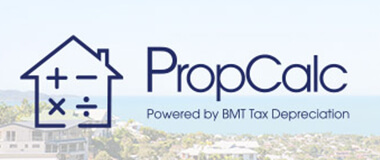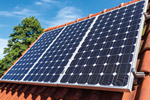Solar assets in the spotlight
Improve yields, boost deductions and help your tenants save
A principle concern of many Australian households in recent years has been rising electricity prices.
A preliminary report from the Australian Competition and Consumer Commission (ACCC) suggests that the increase in prices over the past decade is putting unsustainable pressure on Australian households and businesses.
The report highlighted that residential electricity prices have increased 63 per cent over the past ten years and that the average bill was around $1,524.
As many households struggle to absorb these increases, the ACCC has called on the federal government to focus on lowering prices, to boost the reliability of electricity and to reduce emissions by providing viable alternatives. One such alternative is solar power.
Australia is placed in a fortunate position in comparison with other nations when it comes to solar, occupying ninth place globally when it comes to the energy capacity of installed solar power. However, there is still a way to go when it comes to supporting the renewable energy sector and making solar a viable alternative for home owners and property investors.
According to the Clean Energy Council, renewable energy accounted for 17.3 per cent of Australia’s total electricity generated in 2016. This was an improvement when compared to 14.6 per cent in the previous year.
Australian Bureau of Statistics (ABS) data supports this improvement, with a recent case study on growth in solar power in Australian homes* showing the proportion of households with solar power rising from 15 per cent in 2012 to 17 per cent in 2015-2016.
Despite this increase, ABS data shows that home owners were around seven times more likely to have solar panels present in 2015-2016 than renters.
According to Matter, a company which promotes solar panel installation to both landlords and tenants, there are 2.1 million Australian families who rent that don’t have access to solar. Therefore, it has been argued that more needs to be done to incentivise landlords to install solar assets in their rental properties.
The issue is compounded as willing tenants are discouraged from installing solar themselves due to state tenancy laws requiring them to return the property to its original condition and landlords perceiving little benefit to outweigh the costs of installation. For investors looking to install solar assets in their rental properties, there are a range of benefits to consider.
In a recent survey from realestate.com.au and Origin Energy, the vast majority of renters stated that they would pay additional rent to live in a property with solar energy. Installing solar has the capacity to help investors to improve their rental property yields.
Solar assets are classified as plant and equipment assets. As such, investors who install these assets and directly incur the expense are eligible to claim depreciation.
The table featured highlights some example deductions which can be claimed for solar assets found in an eligible residential property.
| Solar plant and equipment assets | Depreciable value | Depreciation rate | First full year deduction |
| Solar hot water system | $4,160 | 13.33% | $555 |
| Solar generating system | $5,600 | 10% | $560 |
| Solar pool heaters | $2,071 | 10% | $207 |
| Solar garden lights | $32 | 100% | $32 |
| Total | $11,86 | $1,354 |
Assumptions and disclaimer
Installing these assets can be a win-win for both landlords and tenants. Not only will this help to reduce greenhouse emissions, it can provide valuable deductions for the owner and improve rental affordability for tenants.
* Australian Bureau of Statistics 2015-2016 Survey of Income and Housing.

























